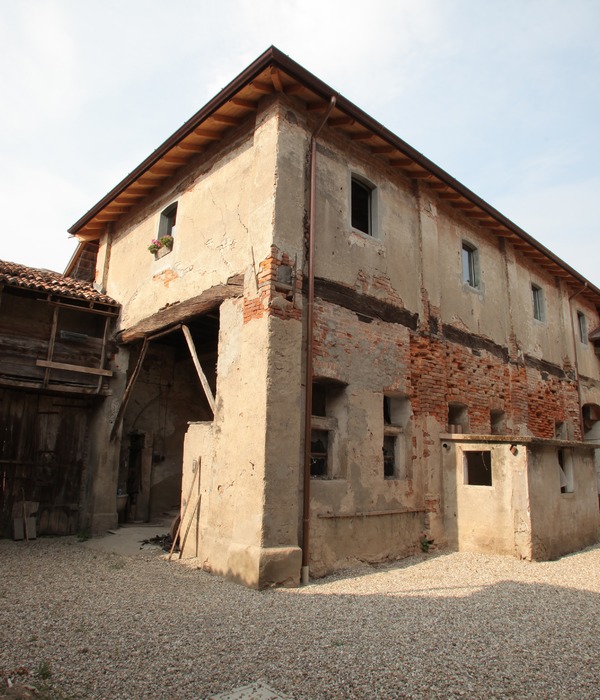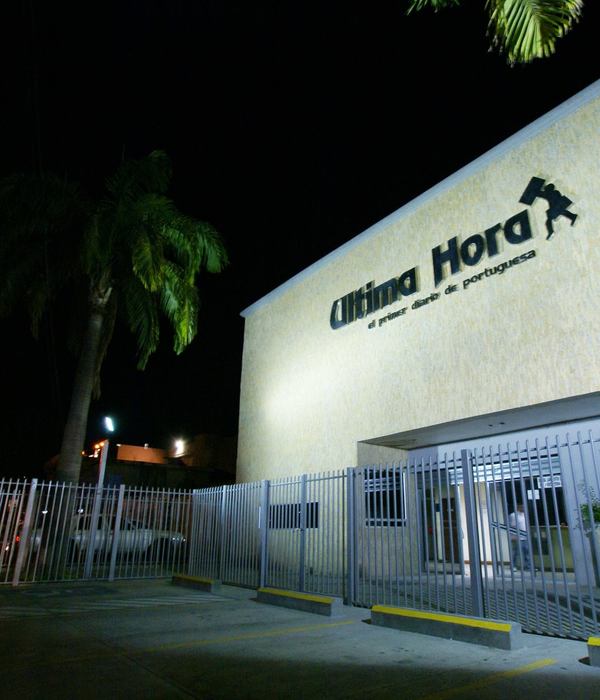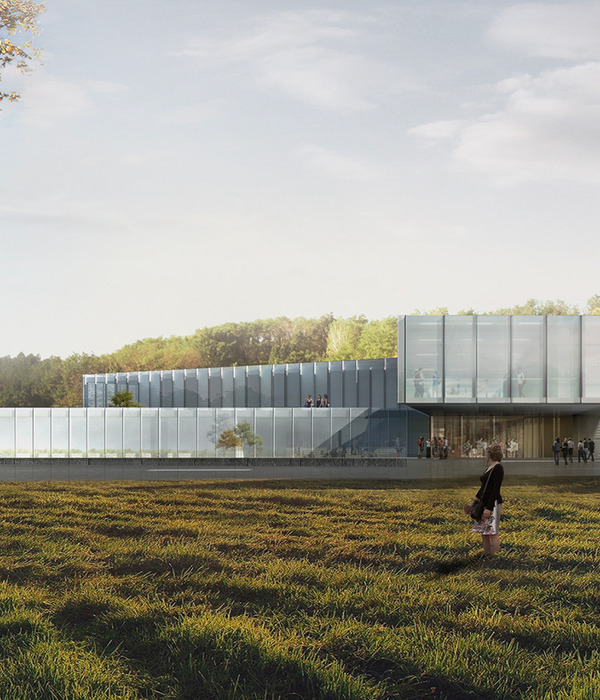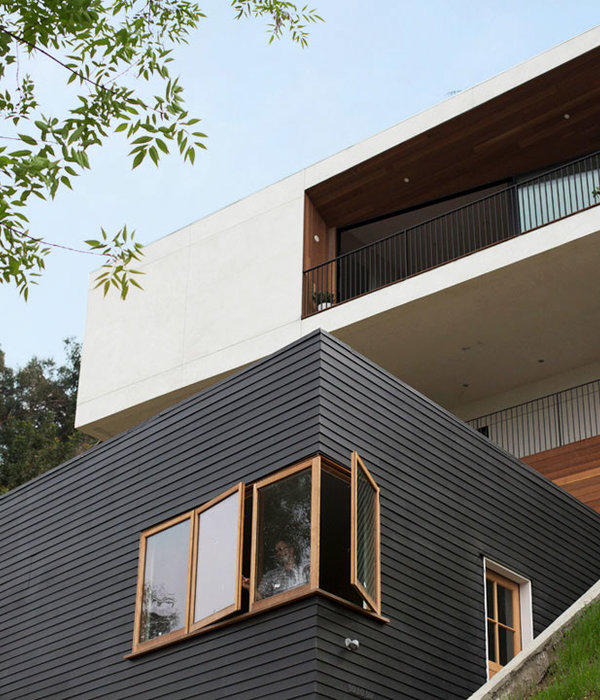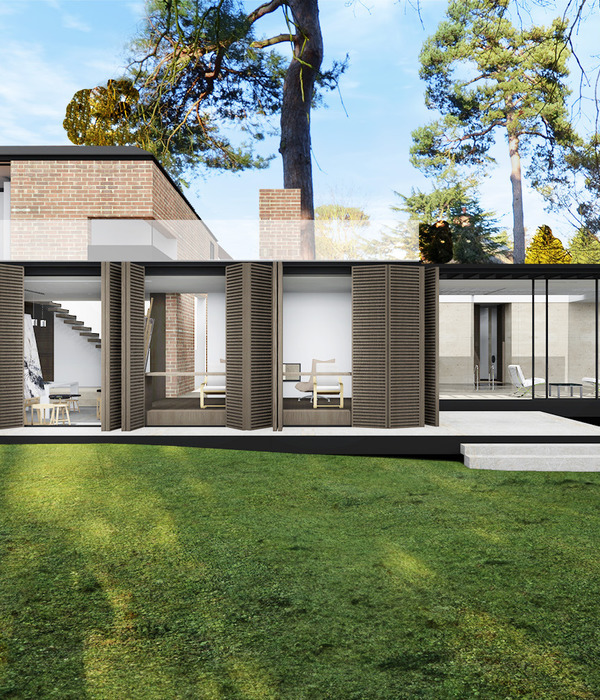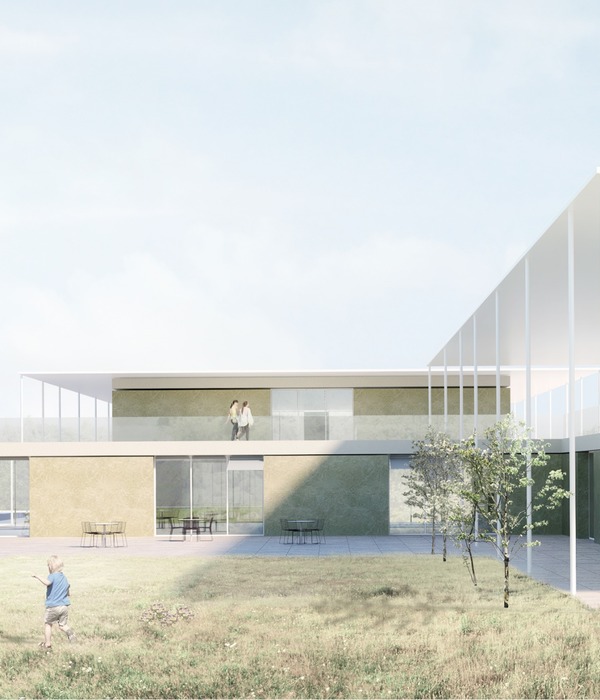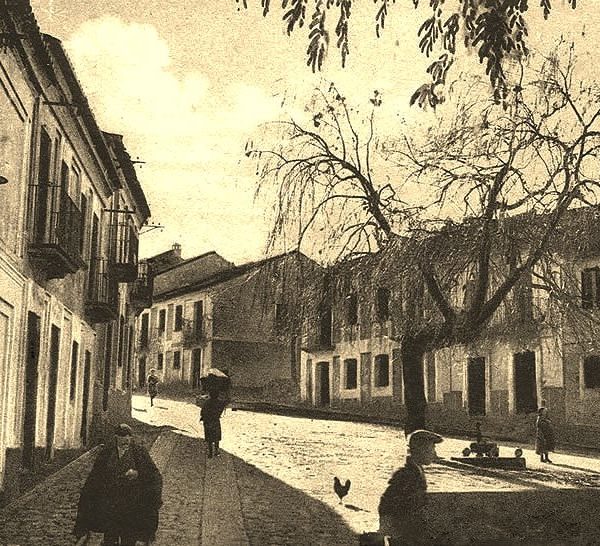经过四年的建设,IQON大楼以130米的高度成为厄瓜多尔首都基多的最高建筑,而基多也是世界上海拔最高的城市之一。
After four years of construction, IQON rises 130m making it the tallest building in the Ecuadorian capital of Quito – a city with one of the highest elevations in the world.
▼项目概览,Overall view
基多在传统上是一个低层建筑密集的城市。十多年前,位于市中心的机场经历了迁址,基多的城市天际线也因此获得了向高处生长的机会。2017年,开发商Uribe Schwarzkopf委托BIG设计一座39万平方英尺的混合用途住宅楼,该项目包括215套住宅、商业单位、办公空间和各类服务设施。除了IQON大楼之外,BIG和Uribe Schwarzkopf还合作打造了位于附近的EPIQ住宅楼,预计将于2023年竣工。
Traditionally a city of dense low-rise buildings, the skyline of Quito was re-imagined following the relocation of the city-center airport over a decade ago. With the skyline able to grow upwards, Uribe Schwarzkopf hired BIG in 2017 to design a 390,000 sq ft mixed-use residential building, including 215 residences, commercial units, office spaces, and a variety of amenities. In addition to IQON, BIG and Uribe Schwarzkopf’s EPIQ Residences, located nearby, is slated to finish construction in 2023.
▼鸟瞰,Aerial view
▼IQON大楼以130米的高度成为基多的最高建筑
IQON rises 130m making it the tallest building in Quito
▼建筑外观,Exterior view
IQON大楼被设计为一个垂直的社区,并将附近La Carolina公园的环境一直延续到建筑的外墙上。大楼的体量有一个明显的弧形转弯,它被外部的一系列露台包裹起来,享有公园、城市和皮钦查火山的视野。
IQON is designed as a vertical community, and an extension of the neighboring La Carolina Park, which continues up onto the building facade. The building features a notable curved corner, wrapped by terraces that continue around the building’s perimeter with views of the park, city and over the Pichincha volcano.
▼大楼和公园绿地,The IQON tower and the neighboring park
▼建筑立面近景,Close-up view to the tower
▼立面上的“像素块”,The stacked ‘pixels’
▼扭转的露台,The rotated terraces
IQON的建筑特征是由其被“剥离”的立面所定义的;原始的、裸露的混凝土同时也充当着建筑的支撑结构。一系列“像素块”堆叠至32层楼的高度,并通过旋转为大楼带来最佳的视野和露台空间。为了凸显当地的树木和植物,建筑在所有可能的位置融合了绿色,旨在充分利用厄瓜多尔的温和气候以及生态环境上的优势——它是全球每平方米植物种类最多的国家。
IQON’s architectural identity is defined by its ‘stripped back’ façade; the raw, exposed concrete simultaneously functions as the building’s structure. Individual ‘pixels’ are stacked 32 floors high and rotated to provide the best possible views while simultaneously creating terraces for the apartments. Celebrating native trees and plants, the building integrates greenery wherever possible to take advantage of with Ecuador’s temperate climate and ecology – the country with the most plant species per square meter in the world.
▼裸露的混凝土同时也充当着建筑的支撑结构
The raw, exposed concrete simultaneously functions as the building’s structure
▼立面细节,Facade detailed view
▼绿植阳台,The balconies with plants
The ground floor plaza includes generous public spaces, retail units, and public art. This central plaza functions as a new east-west pathway, connecting the park to the rest of the neighborhood. Upon entering the lobby, the material palette transitions from the raw, pared-back exterior to a more refined aesthetic; marble stone pavers complement the custom millwork reception desk, and concrete touchpoints nod to the façade. Deep emerald-green tones are utilized on the ceiling tiles, mailboxes, and through to the elevator lobby – an area located beyond a blackened- steel portal.
▼入口空间,Entrance area
▼大厅接待空间,Lobby
通过一系列与建筑设计相融合的独特花池,基多的亲生命性特征从底层的公共空间一直延续到每间住宅的私人领域。在公寓内部,这些花池以混凝土雕塑的形式呈现,一方面为上一层的公寓露台提供了植物生长的基底,另一方面也将建筑的外墙转变为一个能够展示基多丰富植物的界面。
Quito’s biophilia is carried from the public spaces below into the private domain of each home via the sculptural planters that are integrated into the architecture of the building. The planters become a unique concrete sculpture inside the apartments – creating space for the root zone of the tree for the apartment terrace above – while transforming the façade of the building into a celebration of Quito’s verdant biodiversity.
▼公寓露台,Apartment terrace
大楼还扮演了城市中的树木农场:当露台上的植物超出了花池的边界,它可以被重新种植到城市各处的公园内。通过这种方式,建筑完成了从公园到建筑,再从建筑回到公园的绿色循环。
The building also acts as an urban tree farm: once the vegetation planted on the terraces outgrows its planter, it can be replanted in parks all over the city. In this way, the building becomes part of a green cycle – from park to building, and back to park.
▼自然元素延续至每间住宅的私人领域,Quito’s biophilia is carried into the private domain of each home
▼公寓视野,View from the apartment
大楼顶部的综合泳池以及露台为住户提供了视野开阔的休闲场所。其他的建筑配套还包括健身房和壁球场、水疗中心、保龄球馆、娱乐室和商务中心。IQON大楼是基多市第一座经由GBCI(绿色商业认证公司)和IFC(国际金融组织)批准,获得EDGE初期认证的混合用途建筑。
An integrated lap pool and terraces at the top of the building offer residents a place to relax while overlooking the city. Additional building amenities include a gym and squash court; a spa; a bowling alley; entertainment rooms; and a business center. IQON is the first mixed-use building in Quito to have a preliminary EDGE certification, granted by GBCI (Green Business Certification Inc.); and IFC (International Finance Corporation).
▼屋顶泳池平台,Rooftop pool and terraces
▼建筑顶部视角,The top of the tower
▼鸟瞰,Aerial view
PROJECT INFORMATION
Name: IQON
Size: 54,000 m2 / 390,000 sq ft
Location: Quito, Ecuador
Client: Uribe Schwarzkopf
Partner in Charge: Bjarke Ingels, Thomas Christoffersen
Project Designer: Lorenz Krisai
Project Architect: Lucia Sanchez Ramirez, Stephanie Choi
Team: Amir Mikhaeil, Andrea Di Pompeo, Angel Barreno Gutiérrez, Benjamin Caldwell, Benjamin Novacinski, Chi Yin Kwok, Chengjie Li, Claire Djang, Clara Sanfeliu, Deborah Campbell, Douglass Alligood, Francesca Portesine, Jason Wu, Jan Leenknegt, Josiah Poland, Juan David Ramirez, Ma Ning, Magdalena Narkiewicz, Margaret Tyrpa, Maria Sole Bravo, Peter Sepassi, Rune Wriedt, Sebastian Grogaard, Sijia Zhou, Stephanie Choi, Stephanie Mauer, Terrence Chew, Tracy Sodder, Ying Yi Cai, Ziad Shehab
Collaborators: Rene Lagos Engineers and Fernando Romo (local structural engineers), CCP Wind Tunnel (Wind Consultant), Geo Estudios (Civil Consultant), Trialmech (Mechanical Consultant), Incoayam (Plumbing Consultant), Consel (Electrical Consultant), Estrusa (Consultant).
{{item.text_origin}}


